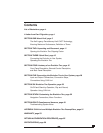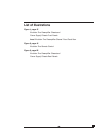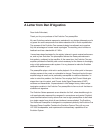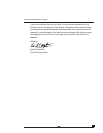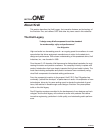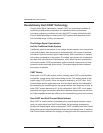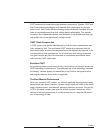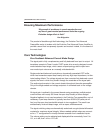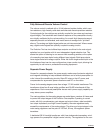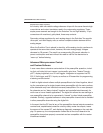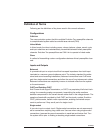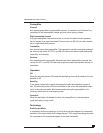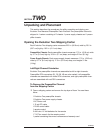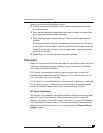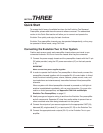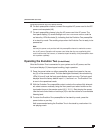
7
Fully Balanced Discrete Volume Control
The volume control is realized with a 16-bit balanced resistor ladder, which uses
low-resistance, high-linearity solid-state switches and discrete precision resistors.
Control signals for the switches are optically coupled for low noise and maximum
signal integrity. The bandwidth and transient response of the preamplifier circuitry
are virtually unaffected by the volume setting. As a result high frequencies sound
especially smooth and extended, and music seems to emerge from “jet black”
silence. The analog and digital signal paths are not interconnected. Where neces-
sary, digital control signals are optically coupled to analog circuits.
The Evolution Two has two buffered tape outputs: one linked to the main signal-
selection bus, and another with its own independent signal-selection bus. This
allows the option of listening to one source while recording another, or the option
of connecting two tape decks having different input signals. Both tape outputs
have single-ended and voltage outputs. Either the fourth single-ended input or the
third balanced input can be user-configured as a tape monitor input, allowing the
opportunity to use home or professional recording equipment.
Separate Power Supply
Housed in a separate chassis, the power supply makes use of extensive electrical
and magnetic shielding to keep radiated interference out of critical preamplifier cir-
cuits. Internal line conditioning circuitry filters RF noise on the AC power, and
compensates for asymmetric power waveforms and DC on the mains.
Power for the analog stages comes from a large 170 VA toroidal transformer. This
transformer drives four 8-amp bridge rectifiers and 39,600 microfarads of filter
capacitance. Each monaural preamplifier has as much power supply capability as
many ster
eo power amplifiers.
The main regulators for the analog stages are scaled-down versions of those used
to power the output stages of the Evolution One amplifier
. Operating in cur
r
ent
mode, with fully complementar
y gain stages and output drivers, wide bandwidth,
low output impedance, and high current capability, the main regulators easily
exceed the r
equir
ements of the analog stages. The driver and output stages in the
main analog r
egulators use five pairs of 150 V
olt, 8 Amp, 40 megaher
tz power
transistors.
A dedicated 90 VA toroidal transformer with three independent secondary wind-
ings powers the preamplifier's digital control circuitry. The regulators for the con-
continue
d



